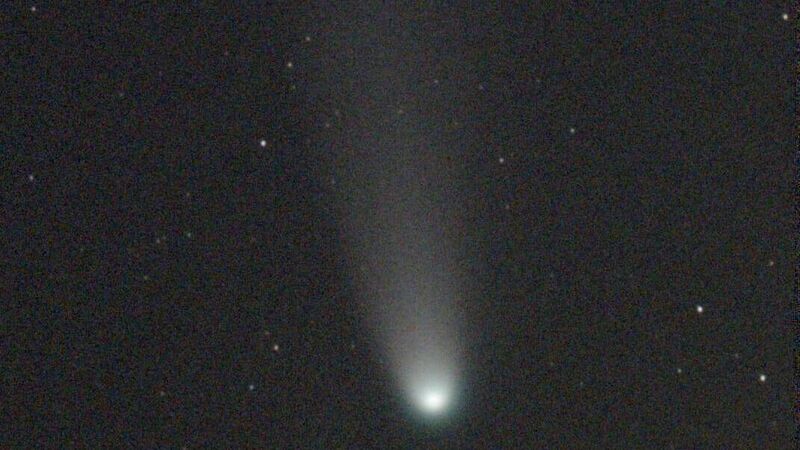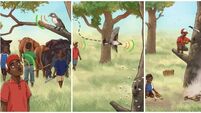Sky Matters: rogue star wandering the galaxy since before the earth or sun was born gets a temporary comet tail

Comet C/2025 A6 (Lemmon) — pictured from Blackrock Castle Observatory. Unlike the interstellar wanderers referred to in the article, this comet is bound to the Sun and takes about 1,300 years to complete one orbit.
We are all familiar with the idea of a solar system... a gathering of planets and smaller objects (comets, asteroids and moons) orbiting a parent star again and again over periods of billions of years.
Solar systems provide a high degree of stability — a place in the vast cosmos that one can feel comfortable when referring to it as 'home'.
Yet in recent years astronomers have discovered a range of objects that appear to be wandering around the galaxy, not anchored to any particular star or indeed in some cases not even a particular galaxy. These include 'runaway stars' which have been ejected from their birthplace, possibly as a result of an energetic supernova explosion or an interaction with a group of massive stars which generate a kind of gravitational slingshot effect. Although slingshots are rare, with more than 400 billion stars in our galaxy alone (and at least that many more in the observable Universe) that still leads to an appreciable number of stars being ejected over time.
One example is AE Aurigae, ejected from the Orion Nebula some millions of years ago. While you can’t easily see AE Aurigae itself, you can see its birthplace in the Orion Nebula just below the three stars in the belt of the constellation of Orion. And during November, Orion becomes a prominent winter constellation that is easy to observe.
There are also 'hypervelocity stars' which are moving so fast that they are headed out of the Milky Way into the unimaginably empty space between galaxies. Other 'rogue stars' are already amongst the loneliest stars in the Universe, drifting slowly between galaxies for most of their lifetimes, destined to fade away in the cold of space without any companions.
There are also much smaller objects wandering amongst the stars. Inevitably, some of these are likely to pass through our solar system on their way elsewhere.

One such object is a comet called 3I/ATLAS which was discovered on July 1, 2025 by the Asteroid Terrestrial‑impact Last Alert System (ATLAS) survey telescope in Chile. Its closest approach to Earth will be around 270 million km, so it poses no threat.
It’s fascinating to think that it has likely been wandering the galaxy since before the Earth or the Sun was born. For most of its journey it has been frozen solid, but the warming rays of our Sun are enough to unfreeze some of its gases such as carbon dioxide, generating a faint cometary tail. For a period of a few weeks 3I/ATLAS comes alive, only to pass out of the solar system and spend perhaps the next billion years or more back in its frozen state.
One can wonder whether Earth is the first inhabited planet that 3I/ATLAS has encountered. Or perhaps the only one it will ever encounter.
Whilst pondering that we should remember that humans have sent their own interstellar travellers to wander amongst the stars. The Voyage 1 and 2 spacecraft, both launched in 1977, are officially in interstellar space, beyond the realm of the influence of the Sun. Just like 3I/ATLAS they are free of the constraints of any star or planet and have embarked on a journey that will take them to worlds unseen in the very distant future. Whether they will travel through inhabited solar systems is completely unknown.
The Sun is still the brightest star in the Voyager’s sky, fading only gradually as the years pass until it will eventually become anonymous, invisible even. At that stage, the link to home will have been well and truly broken.
As the dark November evenings take hold and the skies above appear vibrant and full of spectacle, the privileged position afforded to us by a small planet in a stable orbit around a stable Sun is reinforced by the knowledge that not all celestial objects are so fortunate.
- Niall Smith is head of research / head of Blackrock Castle Observatory, Munster Technological University, Cork
Click here for info on how to enter Blackrock Castle Observatory's Cosmic Christmas Art Competition








